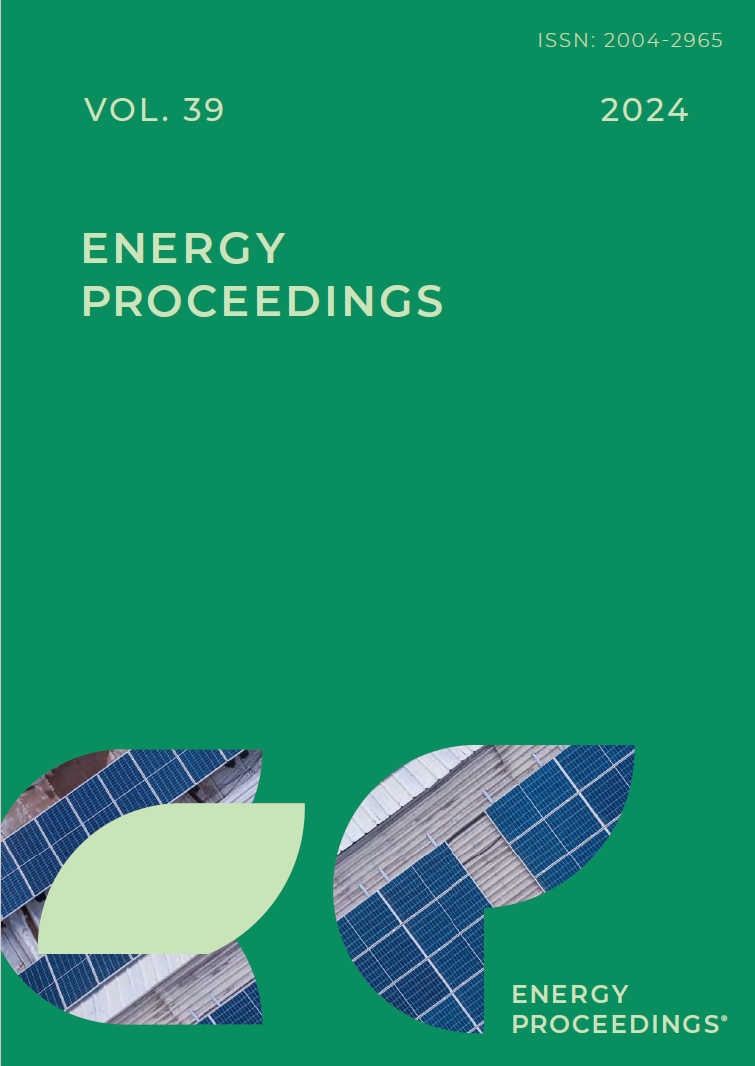
Volume 39: Energy Transitions toward Carbon Neutrality: Part II
ISSN 2004-2965
Improving the performance of a pumped hydro storage plant through integration with floating photovoltaic
Matteo Catania, Abdullah Bamoshmoosh, Vincenzo Dipierro, Marco Ficili, Andrea Fusco, Domenico Gioffré, Federico Parolin, Lorenzo Pilotti, Ferdinando Vincenti, Andrea Zelaschi
Download PDF
Article Preview
Light-enhanced Catalyzed Hydrogenation of Gaseous CO2 over Nanostructured Ni-Fe/La0.8Sr0.2FeO3
Qiong Rao, Tianlong Yang, Jinrui Zhang, Yang Li, Zhongrui Gai, Ying Pan
Download PDF
Article Preview
Investigating the Transient Response of a Low Pt-loaded PEMFC under Various Operating Conditions
Asal Saeidfar, Serhat Yesilyurt
Download PDF
Article Preview
Effects of Surface Functionalization on Interface Bonding of Graphite/Epoxy Composites
Dongmei Yao, Junsheng Zheng , Pingwen Ming
Download PDF
Article Preview
Feasibility study of CO2 sequestration by high quality foam at the late development stage of high water-cut reservoirs
Yali Liu, Chao Zhang, Zhaomin Li, Haitao Wang, Zengmin Lun, Jun Qi, Zhengwei Tang, Penghai Xu
Download PDF
Article Preview
Smart Grid implementation in China: A Cost-Benefit Analysis
Newell Sarpong Boateng, Carla Alejandra Calle Garcia, Marco Ciro Liscio, Paolo Sospiro, Giacomo Talluri
Download PDF
Article Preview
Thermal Management of Lithium-ion Batteries at Low Temperature Based on Composite Phase Change Material
Wenqing Wang, Bin Liu, Xiaodong Fu, Sitong Huo, Kuining Li
Download PDF
Article Preview
Hemispherical Emittance in Multilayer Solar Absorbers: A MATLAB-Based Approach for Optimizing Solar Thermal Efficiency
Eliana Gaudino, Antonio Caldarelli, Daniela De Luca, Umar Farooq, Paolo Strazzullo, Emiliano Di Gennaro, Marilena Musto, Roberto Russo
Download PDF
Article Preview
Factors Controlling Stress Sensitivity of Shale Oil Reservoirs: Mineral Composition and Mechanical Properties
Shuai Zhao, Shenglai Yang ,Yun Luo,Li You,Yubo Liu,Huiying Guo
Download PDF
Article Preview
Time-series evaluation of net energy potentials of solar power generation and electric vehicles in Japan
Yutaro Akimoto, Keiichi Okajima, Shin-nosuke Suzuki
Download PDF
Article Preview

Copyright ©
Energy Proceedings

